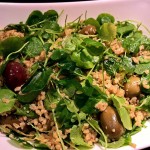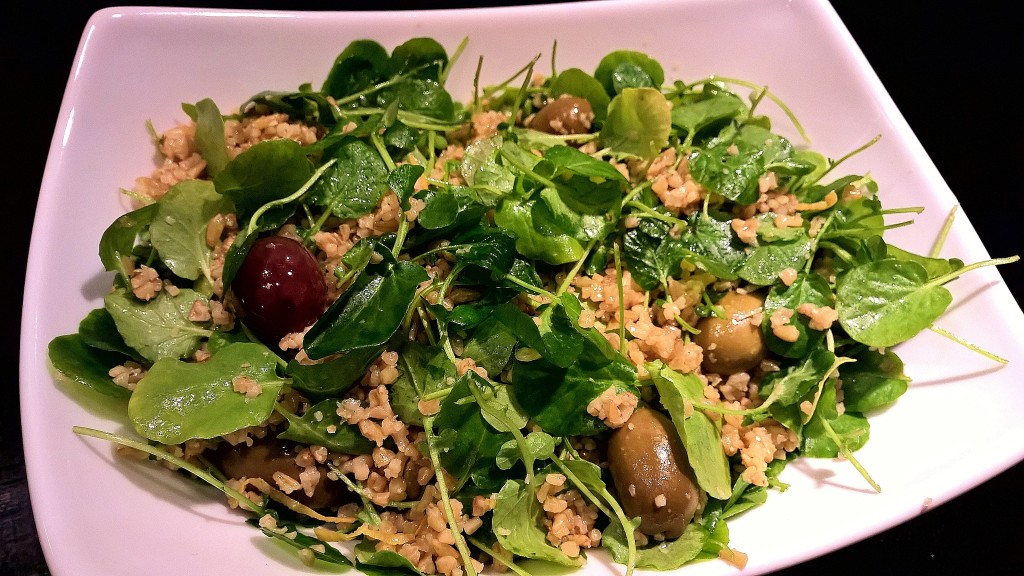You hear the term ‘ancient grains’ a lot these days. When you see or hear this term, it basically encompasses grains like amaranth, spelt, freekeh, kamut, quinoa, etc., and are by definition ‘grains that have been largely unchanged over the last several hundred years.’ (Definition courtesy of www.wholegrainscouncil.org*) Similar to heirloom products, it is important that we all keep buying and enjoying these ancient and heirloom products so that their circulation continues, but also, since these ancient grains are unrefined like modern wheat products, they are more nutritious and good for us overall.
This was my first time cooking with freekeh, an ancient grain very similar to a cracked wheat. It was just as easy as rice to cook and had a lovely bite to it. I tossed the cooked grains together with lemon zest for a fresh kick, peppery baby watercress leaves for a peppery and healthy finish, and plump, briny olives. A nutritious and creative use for freekeh, this combination of flavors would be nice with any of your favorite ancient grains.
(To view this recipe, click on the blue title of the blog post above*)
Freekeh Pilaf with Lemon Zest, Olives & Watercress

Ingredients:
- 1 1/4 cups water or vegetable stock
- 1/2 cup freekeh, uncooked
- Salt and pepper
- zest of 1 lemon
- 1 cup olives
- 2 cups baby watercress leaves
Directions:
- Bring the water/stock to a boil in a medium saucepan. Add in ½ teaspoon of salt and the uncooked freekeh. Reduce the heat to low, cover and cook for 18-20 minutes or until the liquid is absorbed and the freekeh is plumped and tender. Stir with a wooden spoon.
- In a mixing bowl, toss the olives, lemon zest and watercress in with the room temperature freekeh. Season with a touch more salt and a grinding of black pepper, stir again. Serve warm.
Tagged: ancient grains, freekeh, freekeh pilaf, heirloom products, lemon zest, olives, pilaf, side dish, vegetable stock, vegetarian, watercress

Leave a Reply